Why should you fill your lawn with thousands of tiny holes?
Sounds kind of crazy, right?
But aerating your lawn, then filling those holes with high-quality grass seed, can be just the rejuvenating boost your lawn needs.
It can actually make a few of your wishes come true.
Do you wish your lawn was thicker? Greener? Healthier? Not so weedy? Less embarrassing?
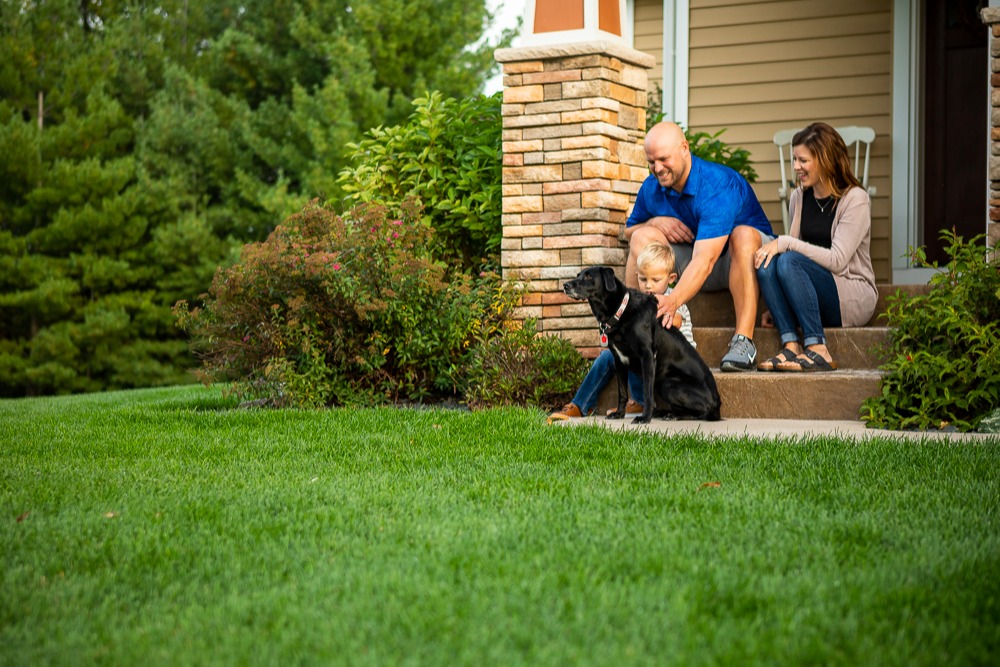
Meet aeration and overseeding. This lawn care dynamic duo has a ton to offer. Here’s what you need to know.
This guide is here to walk you through the why, how, and when of lawn aeration and overseeding — especially for homeowners in the Upper Midwest. If you’re looking for quick answers to common questions, check out our Lawn Aeration & Overseeding FAQs article.
Table of Contents
- The Science Behind Lawn Aeration
- What Are the Benefits of Lawn Aeration?
- You’re Ready for Lawn Aeration! Now What?
- Next Up: The Art of Overseeding Your Lawn
- Lawn Overseeding: Why Do It?
- When is the Best Time to Overseed a Lawn?
- What’s the Best Grass Seed for Overseeding?
- How to Overseed a Lawn? A Few Pro Tips
- What About Sod? Or Hydroseeding?
- DIY Lawn Aeration and Overseeding vs. Professional Services
- Is It Possible You STILL Have Some Questions About Aeration and Overseeding?
- Finding the Right Lawn Care Service in Eau Claire, WI & Minneapolis
The Science Behind Lawn Aeration (and Why It Helps Your Lawn Breathe)
Aeration uses a machine to pull out tiny cores of soil from your lawn, allowing water and oxygen to get to the roots.
Why should you fill your lawn full of little holes? What does aeration do for your lawn?

Over time, your nice, loose airy lawn soil gets harder and compacted. People walk on it, kids trample all over it, dogs run back and forth over it chasing squirrels. The pizza delivery guy is in a hurry, so he considers sidewalks optional. More trampling.
Or maybe your soil started out compacted, if it contains a lot of clay.
Soil with a high clay content is especially likely to get compacted, as the particles squeeze together tightly, making it tough for water and oxygen to get through.
Either way, when your soil becomes compacted, your lawn can't breathe. Its roots can't take in water or nutrients, which weakens your turf and opens the door for disease and weeds.
None of this is good.
Aeration to the rescue.
What Are the Benefits of Lawn Aeration?
Getting that important air and water to your soil are huge benefits of lawn aeration. But it offers other great advantages, too:
When your soil is looser and airier, your fertilizer can easily make its way down to your lawn’s roots and get to work boosting your lawn’s health. A strong, healthy lawn means fewer ugly, thin bare spots that drive you crazy.
Water soaks in more efficiently, too.
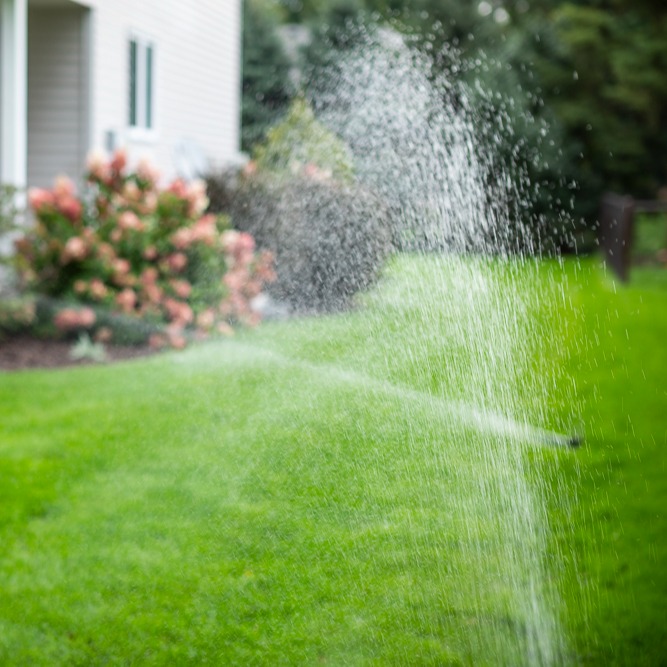
Lawn aeration also helps break down thatch. Thatch, besides being a weird word, is a layer of dead grass and stems that sits between the grass blades and the soil.
When lawn aeration removes plugs from the thatch, it helps it decompose, so oxygen, nutrients, and moisture can get to the roots.
This is all sort of sciencey, but it boils down to this: aeration helps your lawn thrive, with strong, healthy roots. That makes it thicker, greener, less weedy and more likely to make you happy every time you pull in the driveway or gaze at it from your favorite chair on the patio.
A Word About Aeration and Weeds
You hate weeds. Weeds hate a healthy lawn. Aeration and overseeding help create a healthy lawn.
Are you following this?
One of the benefits of aeration and overseeding is obvious when you look out at your lawn. If you use aeration as part of a comprehensive lawn care program, you should see fewer weeds.

Less crabgrass. Fewer dandelions. Bye, clover.
A healthy, thriving lawn with strong, robust roots crowds out weeds.
Preventing weeds is easier than getting rid of them. And a thick, healthy lawn is the best way to prevent weeds. Thanks, aeration.
Let’s Talk About Soil for a Minute
It’s probably been a while since you’ve talked about your lawn’s soil. (We’re confident this is a safe bet.)
But if you want a lush lawn of healthy green grass, you have to think about your soil health. And one of the great benefits of aeration is it improves your lawn’s soil.
That soil tucked out of sight beneath your lawn is the foundation for healthy grass. It’s where your lawn gets the nutrients it needs to grow.
When it’s healthy, it’s full of good stuff you can’t see, but your lawn loves. Wriggly worms. Fungi. (Yup, it’s a good thing.) Nutrient-rich microbes that nourish it.
But If your soil is compacted or full of clay, none of that good stuff is in there. Your lawn will struggle to get the food it needs to thrive.
Aeration will loosen it up.
Then, after aeration, when your lawn is filled with those little holes, top dress your lawn with compost. That adds nutrients to give it a natural boost.
Timing Is Everything: When to Aerate Your Lawn in WI & MN
How to aerate your lawn? Before you run outside excitedly with a screwdriver or the handle of a wooden spoon, first things first: this is really a job best left to the pros. We’ll explain more about why in a bit.
Some lawn tasks are best done at specific times of year, and timing really does matter.
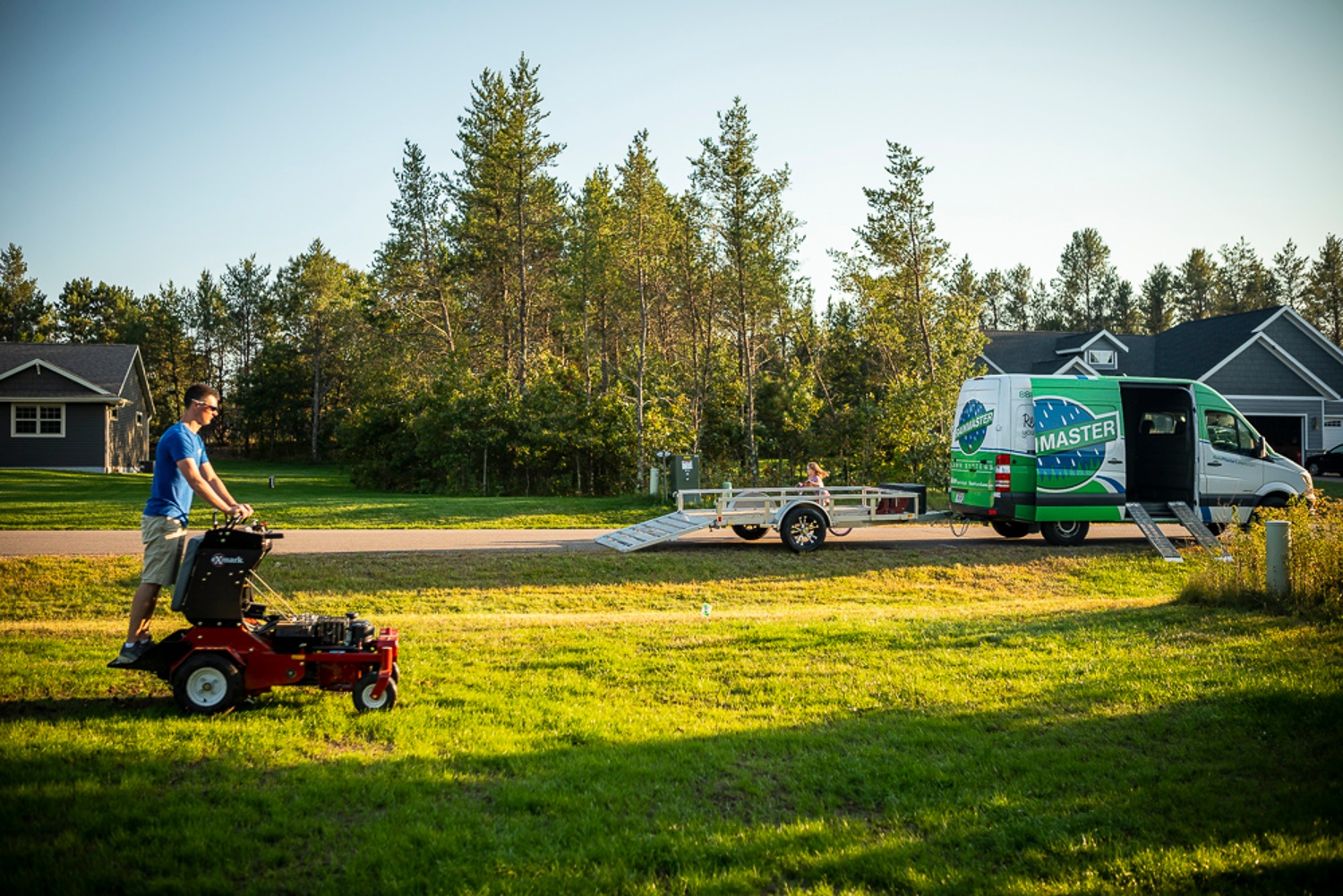
It might seem like spring is prime aeration season, but here in Wisconsin and Minnesota, fall is the best time for lawn aeration, for a few good reasons:
- The weather is nice and cool here in the fall, which is perfect for that new grass seed to germinate and grow. (More on the perfect pairing of aeration and seeding in a bit.)
- There’s usually no threat of frost yet in September, like there is in the spring.
- When’s the best time to aerate and overseed your lawn? Aerate in the fall, and you don’t have to worry about spring crabgrass preventer killing your grass seed. The two don’t get along.
- Fall can be rainy, which means free watering from Mother Nature
- There are fewer weed seeds blowing around in the fall that can settle into the aeration holes and grow. Why give weeds an advantage, right?
- Lawn aeration in the fall gives new grass time to grow and store nutrients before it goes dormant for the winter.
- There’s less mowing and foot traffic in the fall, making it easier for new grass to thrive.
It can be hard to move your schedule around your lawn's needs. Leaving this task to the pros means your lawn can get the right care at the right time of year.
Overseeding 101: How to Fill in Thin Spots and Boost Density
As long as your lawn is filled with holes, now is the perfect time to add grass seed to help rejuvenate your lawn.
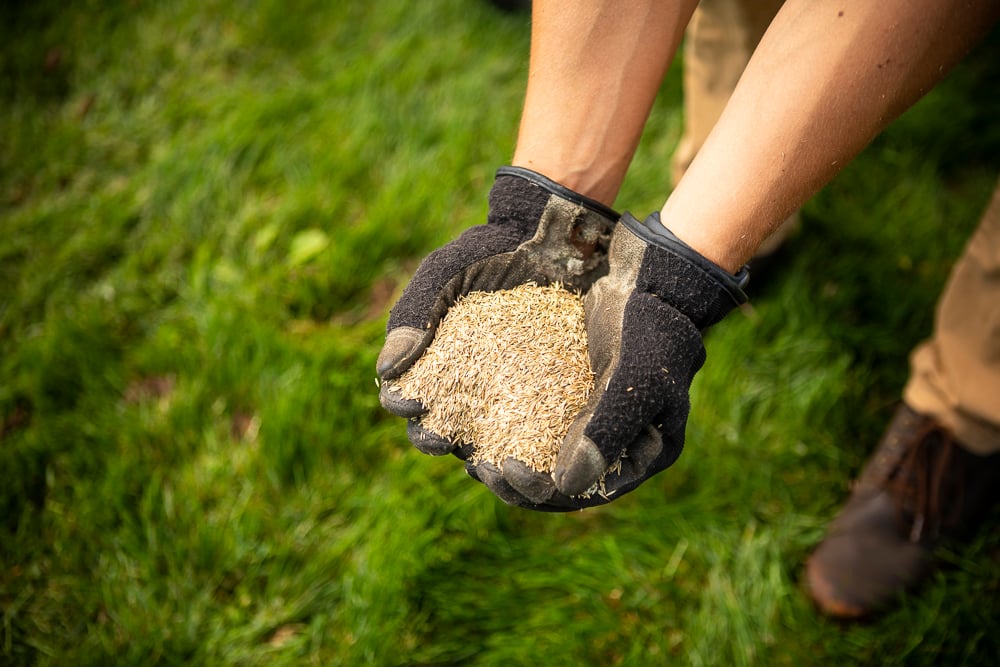
That’s why you see aeration and overseeding paired together like peanut butter and jelly or grilled cheese and tomato soup or cookies and milk. (Is it getting hungry in here or us it just us?)
They’re a great combo.
What is overseeding a lawn?
Don’t be confused by the term “overseeding.” Most people just call it “seeding” — the act of spreading seed over your yard to grow new grass.
Why call it an “art?” Well, there’s more to it than just tossing handfuls of seed over dirt and hoping for the best.
You might have questions. What’s the best grass seed for overseeding? How to control weeds while you’re growing new grass? And how to make sure that seed actually turns into grass?
See, there’s some stuff involved. Let’s answer a few top questions:
Lawn Overseeding: Why Do It?
If your lawn is thick and healthy, you might not need overseeding. But whose lawn is perfect, right?
If there are thin or bare spots where your lawn is struggling, or you see fungus or disease, those are signs some fresh, quality seed can really make a difference.
Why Fall Is the Perfect Time to Overseed Your Lawn
Just like fall is great for aeration here in Wisconsin and Minnesota, fall is the best time to tackle overseeding, too.
It’s the perfect set-up: warm soil, cool air, rainy days, and time for new grass roots to develop before winter sets in.

Also, as we mentioned earlier, there aren’t as many weed seeds blowing around in the air in the fall, looking for a cozy place to settle in.
How to Choose the Best Grass Seed for Your Lawn’s Needs
High-quality seed is your absolute best bet.
Skip the cheap seed, please. That inexpensive grass seed at the home improvement store may actually contain weed seeds and undesirable grass seed. It’s not great.
Also, if your grass is all one variety, like Kentucky bluegrass, be sure the seed you’re planting is the same variety as the rest of your lawn.
If you have dark green grass and buy the wrong type of seed, you might fill in those bare spots with bright green grass that doesn’t match.
Pay the extra to get high-quality grass seed that will blend with your lawn and get you the dark green grass you want.
That said, don’t be afraid to go with a mix of different types of grass seed.
Every type of grass has advantages and disadvantages.
Fescue does better in shade. Bluegrass thrives in the sun. Rye stands up well to high foot traffic.

That’s why a blend of these grasses is great — you get a bit of all their good qualities. Plus, a mix is better at fending off lawn diseases.
How to Overseed a Lawn? A Few Pro Tips
A few key tips will help make sure that lawn overseeding actually turns into grass:
- Limit foot traffic as your seed sprouts. Give that tender baby grass a chance to take hold and fill in.
- Don't use weed control products for at least a month after lawn overseeding. Summon your will power. New lawns are typically packed with weeds, and they usually grow faster than your new grass. They’ll drive you crazy. But that weed killer will also kill your precious new grass.
- So, hold off. (The one exception: if we do your lawn care. We have a pro-level product that will kill weeds without harming your new grass. We can use it the day we seed.)
- Water extra at first. After lawn overseeding your grass needs more frequent watering in smaller amounts. Yes, this is the opposite of your strategy for mature grass, which needs less frequent watering but for longer periods of time. But don’t drown your new grass. Lots of people tend to overwater their new lawns, overestimating their thirst.
- Use starter fertilizer. This fertilizer designed for new grass helps it grow and get stronger. It contains phosphorus and quick-release nitrogen in smaller doses — your new lawn’s tender roots need quick access to these nutrients.
Keep up the care. Make sure your new lawn continues to grow strong and healthy.
A proactive, comprehensive lawn care program is designed to nourish your lawn each year so its roots are healthy, its blades are thick and lush, and weeds have a tough time taking hold.
What About Sod? Or Hydroseeding?
Sure, there are other methods to getting a nice green lawn started.
But when you need to grow grass, good old dependable seed almost always does the trick.
It’s the only method we use here at RainMaster, because it works.
Whether you need to spot-seed a small patch or aerate and overseed your whole lawn, high-quality grass seed and attention to watering is a solid option.
Thinking DIY? Why Hiring a Pro for Aeration Might Be Worth It
Maybe it sounds kind of fun to maneuver a big machine around your lawn. It’ll impress the neighbors.
So, you plan to rent an aerator and tackle the job yourself. It’ll probably save you some money, right?

Make sure you know what you’re in for before you head to the rental
place.
First, the Cost Savings Isn’t That Great
What’s the cost to aerate your lawn? Can you save a lot by doing it yourself?
Aerator rental in Minneapolis and Eau Claire ranges from around $125 to $160 per day.
At RainMaster, the cost for pro aeration for an average 12,000 square foot yard is $208.
Depending on the size of your lawn, the difference might not be that much.
Aerating Your Lawn is Hard Work
These 300-lb. lawn aerator beasts are bulky and heavy. And they don’t exactly glide effortlessly across your lawn. They really shake up your bones.
By the end of this chore, your body will feel really beat up — especially if you’re not used to doing outside work.
Do you have a pick-up truck or a trailer? You can’t exactly toss a 300-lb aerator in your back seat. If you need to rent a trailer, add that to your aerator rental cost.
You Might Be Disappointed with the Results
If you’re aerating your lawn, the soil is probably compacted. After all, that’s the main reason people aerate their lawns.

If the ground is really hard, you’ll be disappointed with your DIY aeration results. The tines might not even pierce the compacted soil. Or you might have to do two passes with the aerator, which is twice the work and time.
Professionals use more powerful stand-on aerators that use hydraulic pressure to drive the tines into the ground and pull out deep cores of soil.
Stuff Can Go Wrong
What kind of stuff? Maybe you’ll wrestle that big rental aerator home only to discover the tines are bent or it won’t start. Ugh.
What if you accidentally hit your irrigation system? The cost for this DIY brainstorm is adding up.
Then, What About Overseeding?
Say you’ve finally managed to get all those great little holes in your lawn. Next up, seeding.
What’s the best grass seed for overseeding? Is there a certain kind that’s best for your lawn? How much do you need? Have you noticed this whole thing is becoming kind of a pain?
Don’t you have better stuff to do on a beautiful fall Saturday?
Let the pros handle your aerating and overseeding so your lawn can breathe again. Then you can breathe easy, too.
Still Have Questions About Aeration and Seeding? Let’s Clear Them Up
We sense you do. Here you go:
Q: What happens to the plugs of dirt the aerator removes? Won’t they look messy? Do you take them away?
A: Leave those plugs right there. They’ll decompose and add valuable nutrients to your lawn. Sure, you can rake them up if they really bug you, but you’ll be depriving your lawn of some really good stuff. Plus, they’ll break down and disappear before you know it.

Q: What about my irrigation system? And my invisible dog fence? Won’t the aerator damage them?
A: Mark your irrigation and invisible dog fence lines with flags. If we’re aerating your lawn and have access to your irrigation controls, we’ll flag your irrigation system.
Q: How fast will I see the benefits of lawn aeration?
A: Patience, please. Results take time. You’ll start to see new grass sprouting in a few weeks, but you might not notice true results for a few months to a year. Eventually, you’ll notice thicker turf. And healthier turf that’s better at resisting weeds and diseases and won’t dry out as fast.
Q: How often should you aerate your lawn?
A: There’s no one answer to this. It depends on the condition of your lawn, its soil, and grass species. Some lawns benefit from aeration every year. Some, every other year. Some lawns need aeration, but not seeding. We’re happy to take a look and tell you if your lawn could benefit. And, we’ll tell you if it won’t.
Finding the Right Lawn Care Service in Eau Claire, WI & Minneapolis
You’re ready to choose a great lawn care company for aeration and overseeding, but they don’t always make it easy, do they?
Many lawn care services have terrible websites, boasting a lot, but not offering clear info on their services. How much do they charge? What are their qualifications? Why should you choose them? It’s a mystery.
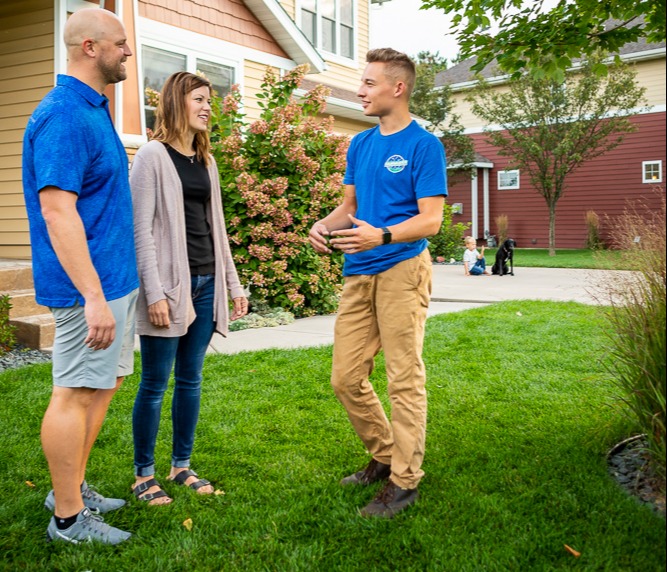
You need to ask some great questions and we don’t just mean what day they’ll show up.
What kind of quality, skills, experience, accessibility, and results will you get?
Looking for aeration and overseeding services in Eau Claire, WI and Minneapolis? Here are some good points to consider as you compare lawn care programs:
- Choose a lawn service with an educated, experienced team. Do they have horticulture degrees? Have they had significant, targeted training? Years of experience?
- Ask what they do to prevent lawn issues, not just repair them.
- What kinds of recommendations will they suggest for you? Aeration? Soil pH adjustment? Grub control? Your lawn isn’t just like everybody else’s.
- Choose a lawn care company that pays more for premium grass seed — even if that means they charge a higher price. The best grass seed for overseeding is more expensive. But it produces beautiful grass, with envy-inducing color that resists disease.
- Can you reach them? Choose a lawn care service with specialists who are accessible to answer your questions.
At RainMaster, our lawn care technicians are skilled, educated pros who know enough about your lawn’s needs to offer individualized suggestions, just for you.
Want to know exactly when we’ll stop by? Of course, you do. That’s why you’ll get email and text notifications prior to your services.
It’s just common courtesy, right?
Questions? Just ask. We can’t wait to hear from you.
Ready for Aeration and Overseeding to Improve Your Struggling Lawn? Trust RainMaster
Aeration and overseeding can work wonders on a lawn that needs a boost.
But it’s just part of an overall plan for a healthy, thriving lawn.
Invest in a complete, pro-active lawn care program to continuously improve and protect your lawn.

Consider it a team effort. Let’s create a custom nutrition plan for your Eau Claire, WI or Minneapolis area lawn, so the roots will be nourished, the soil packed with nutrients, and your grass thick and healthy.
Choose from three different levels of lawn care programs, based on the results you’d like, how fast you want to see results, and your budget.
You deserve great customer experiences, competent pros on your lawn, and high-end products ensuring you get results.
Let’s get to the bottom of your lawn problems. Request a quote today! We’ll review your lawn care options together so you can make a great choice. Then, you can finally enjoy your lawn and stop worrying about it.


